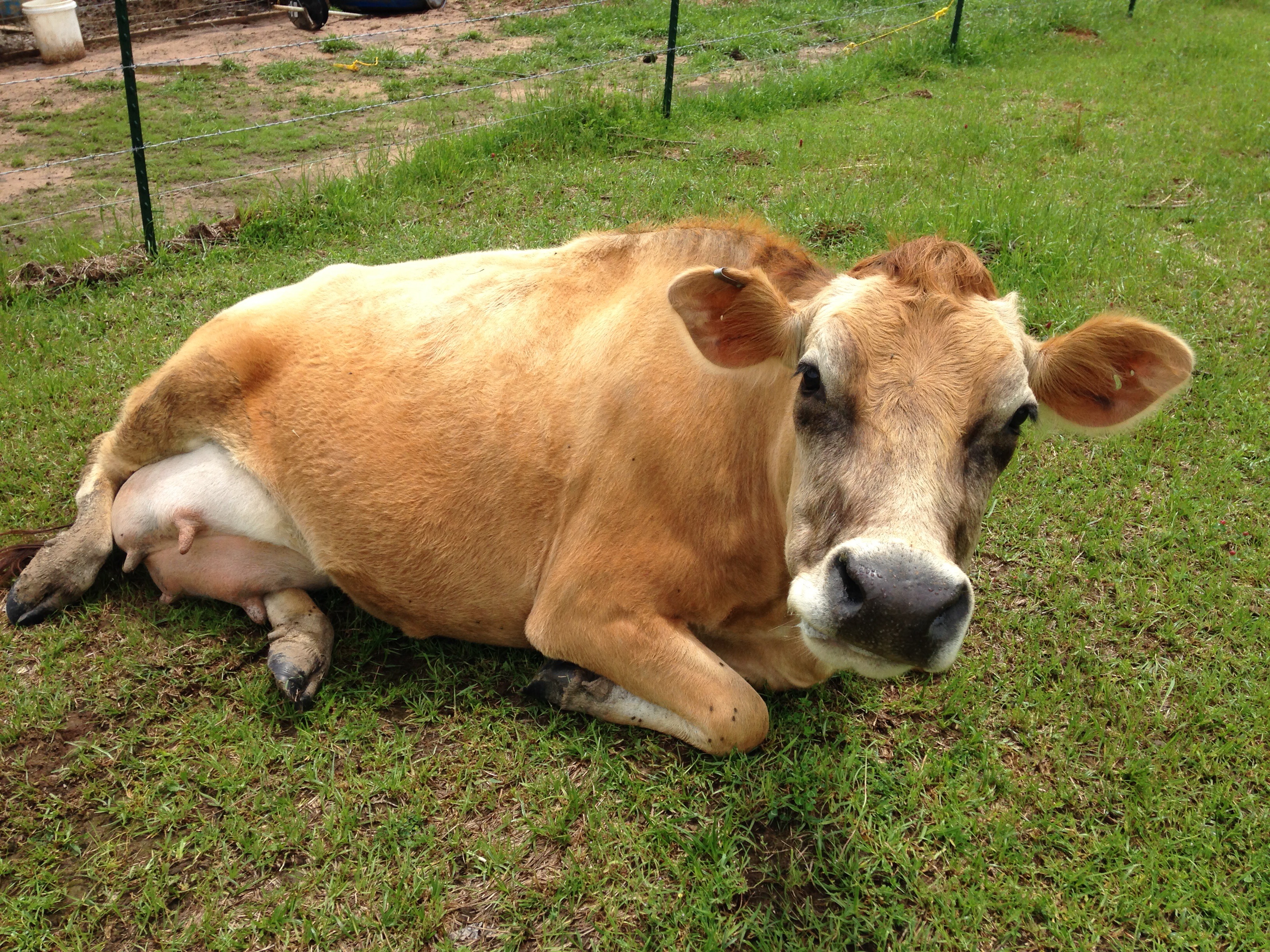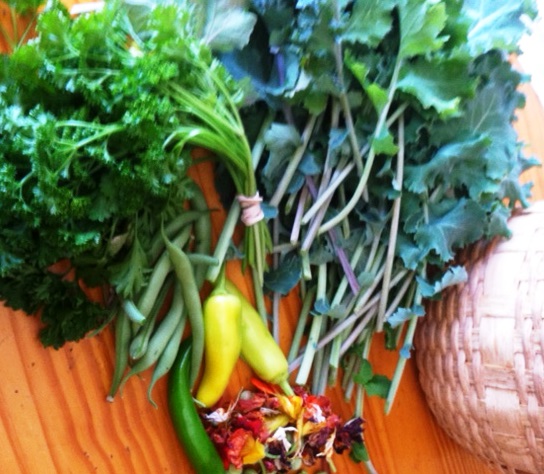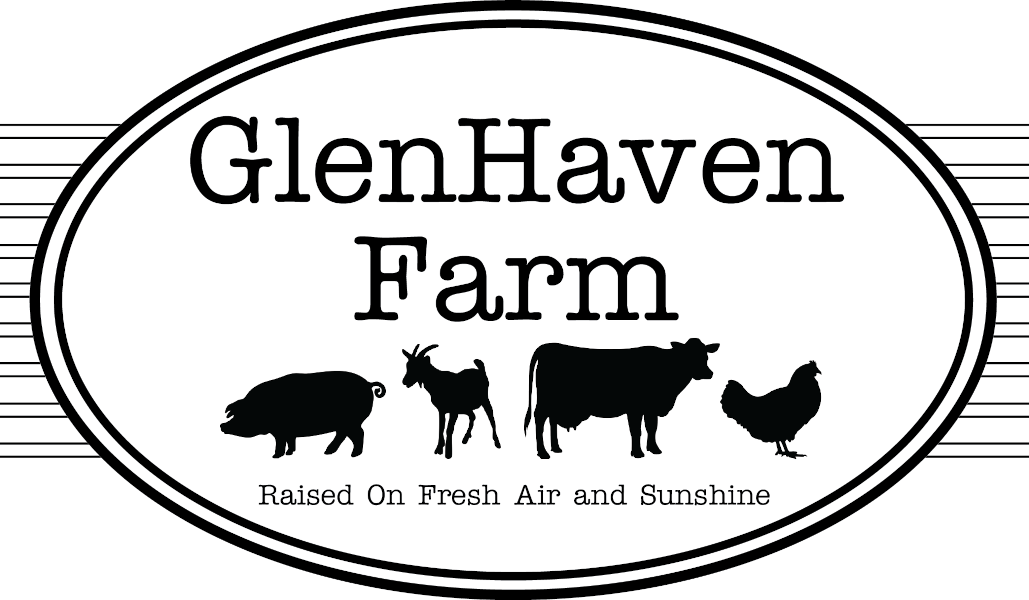Welcome to GlenHaven Farm!

Hello! Sweet Pea here! Let me explain a little side note: we are in the process of renovating our site so if things seems a bit disjointed we’re sorry. Please bear with us as we get situated! The techno learning curve for these farmers is almost as big as my pregnant belly!
One of the main products we raise is pastured chicken. Currently they are sold whole and frozen so our customers frequently ask:
 What do I do with this whole chicken?
What do I do with this whole chicken?
Well, friend, let me tell ya!
There are many ways to prepare a whole chicken. Back in the old days that’s all people had, right?
Here are some of our faves we do at the farm with whole chickens.
Stew the chicken (sometimes I’ll even do 2 at a time) in a pot of water with whatever vegetables are on hand and your basic seasonings: salt, pepper, garlic, onion till chicken falls off the bone (about 1.5-2 hours). Let cool, save liquid for stock and then strip the meat from the bone. Package meat in freezer bags and use to make casseroles, chicken tacos or chicken salad for quick, easy meals.

We’ve also done beer can chicken on the grill, chicken and dumplings (#1 on the family favorite list) and crock pot barbecue chicken.
Many of you have asked about how to cut-up and or cook a whole chicken. I found this great link to demonstrate the cutting technique along with how to make simple stock.
WHY THE HECK SHOULD I BUY THIS CHICKEN
WHEN I CAN GET SOME AT THE GROCERY STORE?
OK – here’s the deal: there are many benefits to eating pastured chicken but rather than taking time to reinvent the wheel …

I’m sharing a fabulous, comprehensive article HERE. I would encourage you to read the whole article however it is lengthy (that’s what makes it so comprehensive lol) so I’ve listed some highlights below.
Pastured products are generally higher in nutrients than those raised in CAFO (confined or concentrated animal feeding operation).
> Understand that labels can be misleading. For instance, free-range doesn’t mean pastured. Many times the animal just has access to the outdoors without ever seeing it or they can be ‘free ranging’ into a mud pit.
Pastured animals are raised in fresh air and sunshine, living life the way they were created to live, not indoors in filthy ammonia toxic air eating their own poo.
>80% of antibiotics are used on factory animals because the conditions are so nasty. These antibiotics are passed on to those who eat the product. *
There is a plethora of information out there but it is up to us to do our research and be informed about what we are eating and feeding our family. I hope this ignites something in you to become a well informed consumer and support your local farmers!
At Glenhaven Farm we follow the practices of Joel Salatin as best we can. He has written numerous books and has multiple youtube videos regarding this subject. The nice thing is, you’re always welcome to visit us and see how we do things. Factory farms don’t allow that.
There is always more to come so follow us on IG, FB and subscribe to our blog by clicking on the lion link above!
See you soon and happy farming!
Susan, Beth and the GlenHaven Farm Ninjas
*All chicken in the US can wear the label ‘antibiotic free” as long as the residue tests under the “certain parts per billion” threshold that the government has established. So, it can be labeled antibiotic free even if it got antibiotics from the day it was hatched to the day it was slaughtered.
